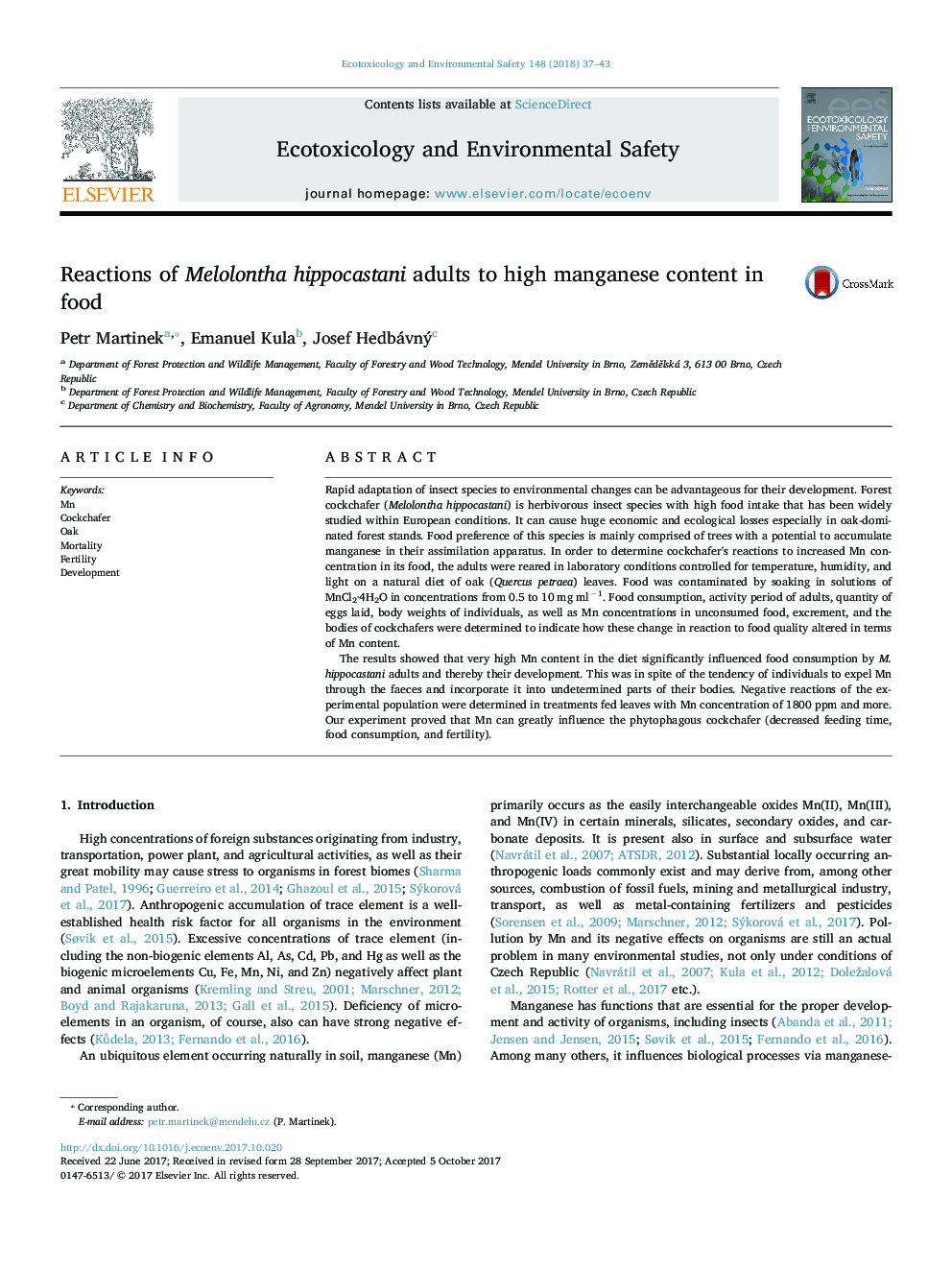| کد مقاله | کد نشریه | سال انتشار | مقاله انگلیسی | نسخه تمام متن |
|---|---|---|---|---|
| 5747452 | 1618916 | 2018 | 7 صفحه PDF | دانلود رایگان |

- Reactions of Melolontha hippocastani to high manganese content in the diet were investigated.
- Activity of adults continually decreased with increasing Mn content in the diet.
- Fertility of females fed on food with the highest Mn content equaled zero.
- Eaten Mn influenced activity of imagoes despite its ability of self-detoxification.
- Expelling Mn through digestive system is the main mechanism of cockchafers' self-detoxification.
Rapid adaptation of insect species to environmental changes can be advantageous for their development. Forest cockchafer (Melolontha hippocastani) is herbivorous insect species with high food intake that has been widely studied within European conditions. It can cause huge economic and ecological losses especially in oak-dominated forest stands. Food preference of this species is mainly comprised of trees with a potential to accumulate manganese in their assimilation apparatus. In order to determine cockchafer's reactions to increased Mn concentration in its food, the adults were reared in laboratory conditions controlled for temperature, humidity, and light on a natural diet of oak (Quercus petraea) leaves. Food was contaminated by soaking in solutions of MnCl2·4H2O in concentrations from 0.5 to 10 mg mlâ1. Food consumption, activity period of adults, quantity of eggs laid, body weights of individuals, as well as Mn concentrations in unconsumed food, excrement, and the bodies of cockchafers were determined to indicate how these change in reaction to food quality altered in terms of Mn content.The results showed that very high Mn content in the diet significantly influenced food consumption by M. hippocastani adults and thereby their development. This was in spite of the tendency of individuals to expel Mn through the faeces and incorporate it into undetermined parts of their bodies. Negative reactions of the experimental population were determined in treatments fed leaves with Mn concentration of 1800 ppm and more. Our experiment proved that Mn can greatly influence the phytophagous cockchafer (decreased feeding time, food consumption, and fertility).
Journal: Ecotoxicology and Environmental Safety - Volume 148, February 2018, Pages 37-43